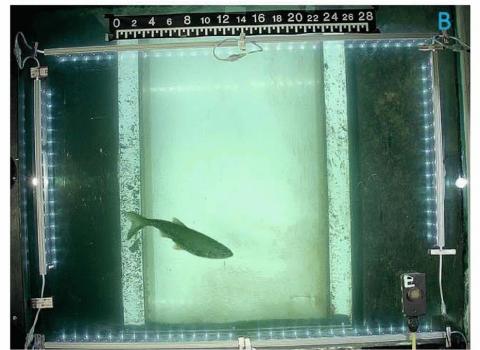Recent studies have shown that reducing the precision of floating‐point calculations in an atmospheric model can improve the model's computational performance without affecting model fidelity, but code changes are needed to accommodate lower precision or to prevent undue round‐off error. For complex...
Filter results
Category
- (-) Earth System Science (136)
- (-) Computational Research (23)
- (-) Cybersecurity (2)
- Scientific Discovery (307)
- Biology (198)
- Human Health (102)
- Integrative Omics (73)
- Microbiome Science (42)
- National Security (21)
- Computing & Analytics (14)
- Chemistry (10)
- Energy Resiliency (9)
- Data Analytics & Machine Learning (8)
- Materials Science (7)
- Visual Analytics (6)
- Chemical & Biological Signatures Science (5)
- Computational Mathematics & Statistics (5)
- Weapons of Mass Effect (5)
- Atmospheric Science (4)
- Coastal Science (4)
- Ecosystem Science (4)
- Renewable Energy (4)
- Data Analytics & Machine Learning (3)
- Plant Science (3)
- Distribution (2)
- Electric Grid Modernization (2)
- Energy Efficiency (2)
- Energy Storage (2)
- Grid Cybersecurity (2)
- Solar Energy (2)
- Bioenergy Technologies (1)
- Computational Mathematics & Statistics (1)
- Grid Analytics (1)
- High-Performance Computing (1)
- Subsurface Science (1)
- Terrestrial Aquatics (1)
- Transportation (1)
- Wind Energy (1)
Tags
- Omics (22)
- Soil Microbiology (21)
- sequencing (13)
- Genomics (10)
- Metagenomics (9)
- Microbiome (8)
- Mass Spectrometry (7)
- Fungi (6)
- High Throughput Sequencing (6)
- Imaging (6)
- Type 1 Diabetes (6)
- Autoimmunity (5)
- Machine Learning (5)
- Mass Spectrometer (5)
- Biomarkers (4)
- metagenomics (4)
- Microscopy (4)
- Molecular Profiling (4)
- Sequencer System (4)
- Sequencing (4)
- Software Data Analysis (4)
- soil microbiology (4)
- Spectroscopy (4)
- Climate Change (3)
- IAREC (3)
- metabolomics (3)
- PerCon SFA (3)
- Proteomics (3)
- Synthetic Biology (3)
- Viruses (3)
Showing 1 - 15 of 161
The direct and diffused components of downward shortwave radiation (SW), and photosynthetically active radiation (PAR) at the Earth surface play an essential role in biochemical (e.g. photosynthesis) and physical (e.g. energy balance) processes that control weather and climate conditions, and...
Category
Soil microorganisms play fundamental roles in cycling of soil carbon, nitrogen, and other nutrients, yet we have a poor understanding of how soil microbiomes are shaped by their nutritional and physical environment. In this study, we investigated the successional dynamics of a soil microbiome during...
Category
Clean energy from oceans and rivers is becoming a reality with the development of new technologies like tidal and instream turbines that generate electricity from naturally flowing water. These new technologies are being monitored for effects on fish and other wildlife using underwater video...
Category
The high temporal variability of the soil-to-atmosphere CO2 flux (soil respiration, RS) has been studied at hourly to multiannual timescales, but remains less well understood than RS spatial variability. How RS fluxes vary and are auto-correlated at various time lags has practical implications for...
Category
Publication
Soil respiration (Rs), the flow of CO2 from the soil surface to the atmosphere, is one of the largest carbon fluxes in the terrestrial biosphere. The spatial variability of Rs is both large and poorly understood, limiting our ability to robustly scale it in space. One factor in Rs spatial...
Category
Predicting phenotypic expression from genomic and environmental information is arguably the greatest challenge in today’s biology. Being able to survey genomic content, e.g., as single-nucleotide polymorphism data, within a diverse population and predict the phenotypes of external traits, represents...
Category
Software
EyeSea software is available at https://github.com/pnnl/EyeSea
Category
Publication
The novel fungal strain, Fusarium sp. DS 682, was isolated from the rhizosphere of the perennial grass, Bouteloua gracilis , at the Konza Prairie Biological Station in Kansas. This fungal strain is common across North American grasslands and is resilient to environmental fluctuations. The draft...
Category
As part of the Pacific Northwest National Laboratory’s (PNNL) Science Focus Area program, we are investigating the impact of environmental change on microbial community function in grassland soils. Three grassland soils, representing different moisture regimes, were selected for ultra-deep...
Category
The soil microbiome is central to the cycling of carbon and other nutrients and to the promotion of plant growth. Despite its importance, analysis of the soil microbiome is difficult due to its sheer complexity, with thousands of interacting species. Here, we reduced this complexity by developing...
Category
The Community Land Model (CLM) is an effective tool to simulate the biophysical and biogeochemical processes and their interactions with the atmosphere. Although CLM Version 5 (CLM5) constitutes various updates in these processes, its performance in simulating energy, water and carbon cycles over...
Category
Dataset
Viral genome assembly annotations from terabase metagenomes (TmG.1.0) from uncultivated soil collections from the IAREC field sites in Washington (IAREC), Kansas (KBPS), and Iowa (COBS), USA. Uncultivated virus Genomes (identified from soil metagenome datasets) Data DOI Package.
Category
Code pertaining to the Soil Microbiome SFA Project publication data visualizations 'DNA viral diversity, abundance and functional potential vary across grassland soils with a range of historical moisture regimes' for processing publication data downloads.
Category
Person
Data Science & Biostatistics



